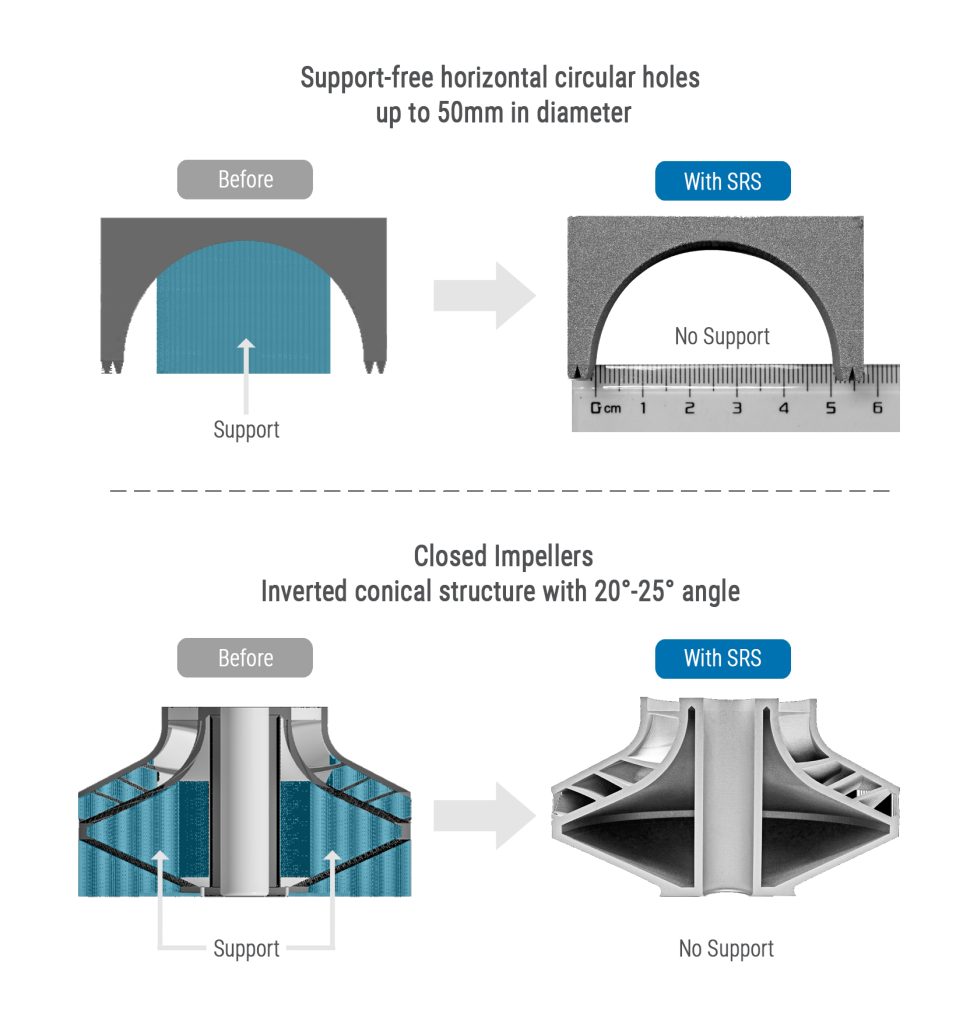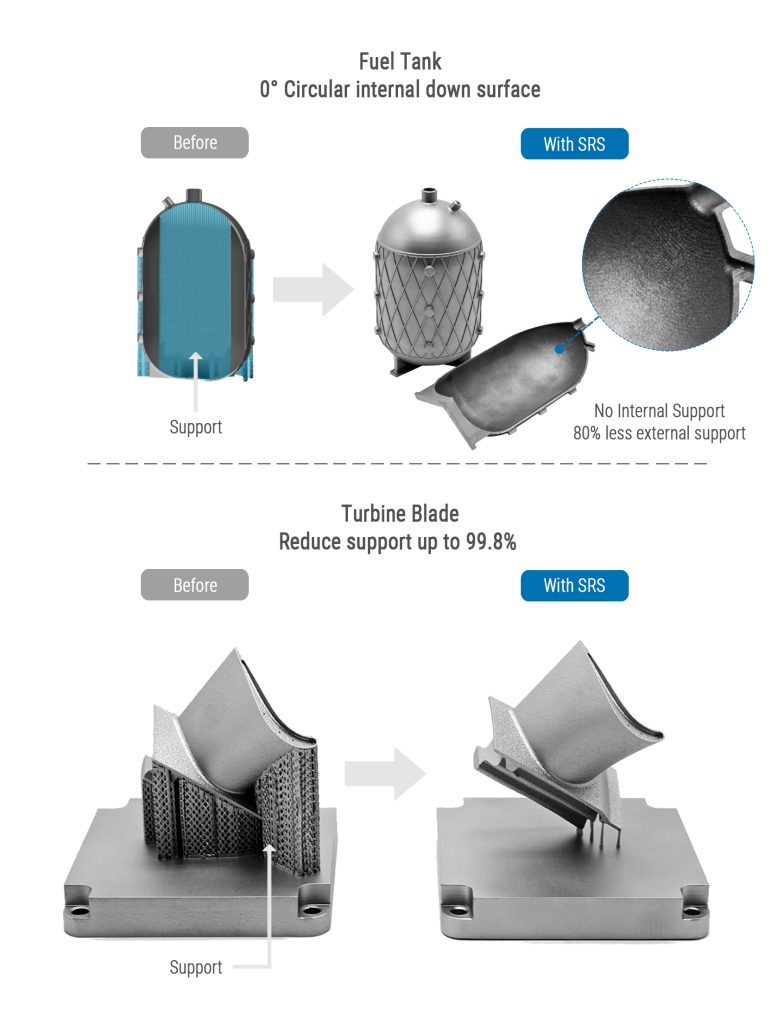Join the Expert Committee for the 2024 3D Printing Industry Awards to help select the winners!
Chinese 3D printer manufacturer Farsoon Technologies has introduced the Support Reduction System (SRS) to address common challenges in metal powder bed fusion (PBF) processes.
Farsoon says this new technology tackles stress and warping during the cooling process after printing, which causes parts to crack, especially in areas that jut outwards (overhanging structures). This technology is suitable for all Farsoon metal PBF systems and allows for reliable printing of upside-down cone shapes with angles between 20 and 25 degrees. It also enables the creation of unsupported horizontal round holes up to 50 millimeters wide, as illustrated in the figure below.

SRS unlocks design freedom and efficiency gains
The SRS technology allows for printing features with shallower angles without support structures. Traditionally, such features (below 45 degrees) require support to prevent breakage during printing. This eliminates the need for extra material and reduces printing and post-processing time. Additionally, it avoids potential damage to the part from support removal, leading to both increased efficiency and higher quality parts in applications like automotive and aerospace.
Farsoon’s slicing software when combined with adaptive intelligent scanning strategies enables precise control over the energy delivered and the temperature of different parts of the object being printed. This results in denser parts and a significant improvement in how well the technology can produce low-angle structures compared to traditional scanning methods.
Beyond cost and time savings, the SRS support reduction technology offers design advantages. It loosens restrictions associated with traditional manufacturing techniques, enabling the creation of more intricate geometries. This translates to the potential for parts with previously unachievable features. For instance, an IN718 material closed impeller, measuring around 130mm in diameter and 50mm in height, can now be manufactured 33% more quickly, resulting in cost savings of over 25%.
The company has implemented this minimal support technology across various real-world applications and materials including titanium alloys, high-temperature alloys, aluminum alloys, and stainless steel. From combustion chambers to closed impellers, valve bodies, and nozzles, the applications span a wide spectrum, with the largest parts surpassing 450mm in size.

A steady rise in support-free 3D printing
Before Farsoon, many other entities actively participated in the development of support-free 3D printing. A recent example includes that of Jiangnan University scientists in China who introduced a support-free D printing method for complex ceramic structures. Their findings, published in Nature Communications, highlight the technique’s unique capability to cure multi-scale filaments on the spot, ranging from 0.41 mm to 3.50 mm in diameter. By merging direct ink writing with near-infrared (NIR) light-induced up-conversion particle-assisted photopolymerization, the process involves pressurized extrusion of ceramic slurry, followed by instantaneous solidification using a 980 nm NIR laser.
Back in 2022, scientists at Colorado State University revealed a novel approach for producing carbon fiber-reinforced composite parts devoid of support structures. Central to this technique is a custom-formulated thermoset resin paired with a distinctive curing process termed frontal polymerization. Here, the material solidifies during extrusion, rendering the part rigid almost instantly, eliminating the need for external UV or IR radiation, resulting in support-free 3D printing.
In another news, 3D printing software developer Dyndrite released software tools (APIs) for 3D printer manufacturers simplifying the integration of features like support-free metal printing. The software works by dividing the model (part) into sections smaller than the minimum printable feature size. This allows for assigning specific processing settings, without supports, to different areas within the same model.
What are the 3D printing trends the industry leaders expect to see this year?
What does the Future of 3D printing hold for the next 10 years?
To stay up to date with the latest 3D printing news, don’t forget to subscribe to the 3D Printing Industry newsletter or follow us on Twitter, or like our page on Facebook.
While you’re here, why not subscribe to our Youtube channel? Featuring discussion, debriefs, video shorts, and webinar replays.
Are you looking for a job in the additive manufacturing industry? Visit 3D Printing Jobs for a selection of roles in the industry.
Featured image shows the fabrication of unsupported horizontal circular openings, reaching widths of up to 50 millimeters. Image via Farsoon.


